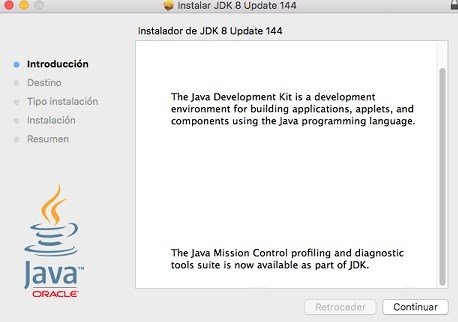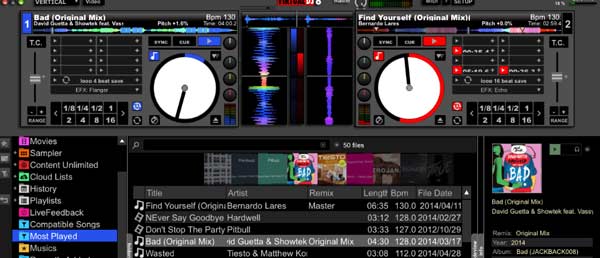

- #Java jdk 7 mac osx how to
- #Java jdk 7 mac osx for mac os x
- #Java jdk 7 mac osx for mac
- #Java jdk 7 mac osx mac os x
- #Java jdk 7 mac osx software
catalina. Java Development Kit for Mac (175.77 MB) Safe & Secure Java JDK 14.0. macOS 11 Big Sur Homebrew 2.7.4 JDK 8, 14, 16, 16 (AdoptOpenJDK and OpenJDK) Topics.
#Java jdk 7 mac osx how to
$ sudo chown -R nobody:nobody /Applications/tomcat This article shows how to install Java JDK on macOS, Homebrew package manager, manual installation, and switch between different JDK versions. Instead, assign Tomat to user nobody (of group nobody):

#Java jdk 7 mac osx mac os x
Enter the following Java source code and save the file as " Hello.java". Jdk 7 Mac Os X Install Jdk 7 Mac Brew Jdk 7 For Mac In my case, I need to keep JDK 7 as my default version, so I set the global version to 1.7: jenv global oracle64-1.7.0.79 And in my project, I set the local JDK version to 1.8: cd jenv local oracle64-1.8.0.66 The above command will create a.java-version file at project root.Open a new file by selecting "File" menu ⇒ "New"."ErrorList" plugin will selected automatically ⇒ Install. Open plugin manager: From "Plugins" menu ⇒ Plugin Manager.Drag the "jEdit" icon to "Applications" folder.

#Java jdk 7 mac osx for mac os x
To start nano, open a Terminal and issue: While you can download the binaries for Java 7 for Windows and Linux from here, the instructions for setting up Java 7 for Mac OS X are a lot more tedious. Nano is a GNU text editor that is available for Unix Systems (including Mac OS X), that is suitable for creating/editing small files. $ open -e filename nano (or pico) Command-line Text Editor You can open an existing file in TextEdit from Terminal by issuing:
#Java jdk 7 mac osx software
This package is exclusively intended for support of legacy software and installs the same. To use TextEdit to write source file, you need to open a new file ⇒ choose "Format" ⇒ "Make Plain Text". Java for macOS 2017-001 installs the legacy Java 6 runtime for macOS 10.13 High Sierra, macOS 10.12 Sierra, macOS 10.11 El Capitan, macOS 10.10 Yosemite, macOS 10.9 Mavericks, macOS 10.8 Mountain Lion, and macOS 10.7 Lion. I strongly suggest you install a programming text editor. TextEdit (the default text editor in Mac OS X) is NOT a programming text editor, as it lacks features like syntax highlighting. Programming Text Editors for Mac TextEdit for Mac How to Install JDK and Get Started with Java Programming on Mac Read " Unix Survival Guide for Mac & Ubuntu - Terminal, File System and Users". You MUST have some basic knowledge on using the Terminal and the file system. Programmers use "Terminal" to issue commands, instead of the graphical user interface - which is meant for common users. In summary, if you are trying to figure out where JAVA_HOME is on your Mac OS X system, I hope this has been helpful.Getting Started with "Terminal" - MUST READ Before You Start Programming You might also be able to find some of these settings in the Mac OS X Control Panel, but I looked just now, and did not see them (though you can see Java's "temporary internet files" from that console). If you have XCode installed you can now find the JAVA_HOME directory with this command: I have no way of verifying this any more, but on Mac OS X 10.5, 10.6, and 10.7, I'm pretty sure this is where the JDK JAVA_HOME was located: Library/Internet\ Plug-Ins/ugin/Contents/Home/bin/java -version Older Mac OS X systems This is confirmed by this Oracle Java/JRE documentation page, which shows that you can demonstrate this by running this command in the Mac Terminal: Library/Internet Plug-Ins/ugin/Contents/Home If you've installed the Oracle JRE (as opposed to the JDK), JAVA_HOME for it appears to be located here instead: Of course that will vary by the JDK version you have installed. Library/Java/JavaVirtualMachines/jdk1.7.0_51.jdk/Contents/Home/ Library/Java/JavaVirtualMachines/jdk1.8.0_181.jdk/Contents/Home This has changed over time, but if you're using Mac OS X 10.9 or newer (now macOS), your JDK/SDK JAVA_HOME location for Java 8 will be something like this: Java/Mac FAQ: Where is JAVA_HOME located on Mac OS X (macOS) systems? macOS JDK location Contact me at (al) at valleyprogramming (dot) com for details. Want to work together? Your business can now hire me (Alvin Alexander) for small Scala and Flutter side projects.


 0 kommentar(er)
0 kommentar(er)
